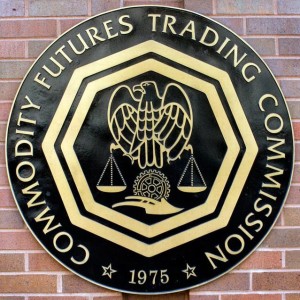A Commodities Futures Trading Commission (CFTC) Commissioner called on 2018 to be the year when a critical regulation over automated trading is finalized.
Rostin Behnam has been a CFTC Commissioner since he was sworn in on September 6, 2017, and he was speaking in front of the FIA/SIFMA Asset Management Group, Asset Management Derivatives Forum 2018, located in Dana Point, California.
As part of his remarks, Behnam expressed his hope that the CFTC would complete Regulation AT.
“The Commission issued proposals for Reg AT, or Regulation Automated Trading, in both 2015 and 2016,1in order to establish pre-trade risk controls to mitigate the potential dangers of an unchecked automated trading system. I think the Commission must prioritize this issue and take action before an automated trading system runs amok, causing harm to market participants through a flash crash or other system failure. In this age of technology driven financial markets, the question of a flash crash or automated trading system failure is not a question of if, but simply when.
“Towards the end of 2016, Chris Clearfield of System Logic, a research and consulting firm focusing on issues of risk and complexity, wrote a piece advocating ‘Vision Zero for our markets. ‘Vision Zero’ is a multi-national road traffic safety project that aims to achieve a highway system with no fatalities or serious injuries involving road traffic, while increasing safe, healthy, equitable mobility for all. It originated in Sweden in 1997, and since then, annual road fatalities in Sweden have dropped by half. The success of Sweden’s Vision Zero, Clearfield maintains, provides a lesson that could be applied to our financial markets. ‘Traffic safety regulators there make errors part of the equation by recognizing that mistakes will happen—and creating structures to absorb and buffer those mistakes.’ The same, Clearfield argues, should be true of our financial Vision Zero. ‘In every situation, a trader or a piece of technology might fail, or a shock might trigger a liquidity event. What’s important is that the structures are in place to limit – not amplify – the impact on the overall system.’
 “Clearfield’s article provides some insight into what it takes to build those regulatory structures, and it includes reducing regulatory complexity and thoughtful collaboration between firms and regulators. Regulation, he warns, cannot be enforcement-driven, since we must aim to learn from small errors to prevent the bigger ones. We also must recognize, on both sides, that we have difficult and challenging jobs. Regulators, like the CFTC, may find themselves with conflicting mandates; for example, avoid duplicative burdens while protecting market participants. But, as regulators, we also need to acknowledge that not all of our policies provide benefits that outweigh the costs.
“Clearfield’s article provides some insight into what it takes to build those regulatory structures, and it includes reducing regulatory complexity and thoughtful collaboration between firms and regulators. Regulation, he warns, cannot be enforcement-driven, since we must aim to learn from small errors to prevent the bigger ones. We also must recognize, on both sides, that we have difficult and challenging jobs. Regulators, like the CFTC, may find themselves with conflicting mandates; for example, avoid duplicative burdens while protecting market participants. But, as regulators, we also need to acknowledge that not all of our policies provide benefits that outweigh the costs.
“As we move forward on Reg AT – and I don’t think inaction is an option – we should keep Vision Zero in mind, and work collaboratively with industry to establish appropriate principles and structures in furtherance of well-reasoned, targeted regulation.”
What is Regulation AT?
Regulation AT was first suggested in December 2015 by the CFTC and it proposed “a series of risk controls, transparency measures, and other safeguards to enhance the safety and soundness of automated trading on all designated contract markets (DCMs).
1. The Commission’s proposed rules in Regulation AT reflect a comprehensive effort to reduce risk and increase transparency in algorithmic order origination and electronic trade execution on all U.S. futures exchanges.”
While first proposed in 2015, a final rule has eluded the CFTC.
A post from a derivatives blog from March 2017 described the long slow journey from creation to a final rule for Regulation AT: “In November 2015, the CFTC first proposed Regulation AT, which would regulate automated trading on U.S. designated contract markets (“DCMs”) and was primarily designed to reduce the likelihood of market disruptions caused by automated trading.” The blog stated. “A 90-day comment period followed during which the CFTC received almost 100 comment letters.
“After the conclusion of this comment period, the CFTC held a public roundtable in June 2016 to discuss the proposed regulation. The roundtable focused largely on: (i) narrowing the definition of ‘AT Person’ (with panelists exploring both quantitative and principles-based approaches); (ii) amending the definition of ‘DEA’ to take a more principles-based approach; (iii) avoiding duplicative risk control requirements; and (iv) persisting concerns regarding the requirement that AT Persons maintain and provide to regulators access to ‘source code’ information. The CFTC Commissioners generally have indicated a willingness for flexibility on the proposed regulation, including at the roundtable.”
The CFTC passed a supplemental to the rule in December 2016, but the full final rule continues to elude the commission.








